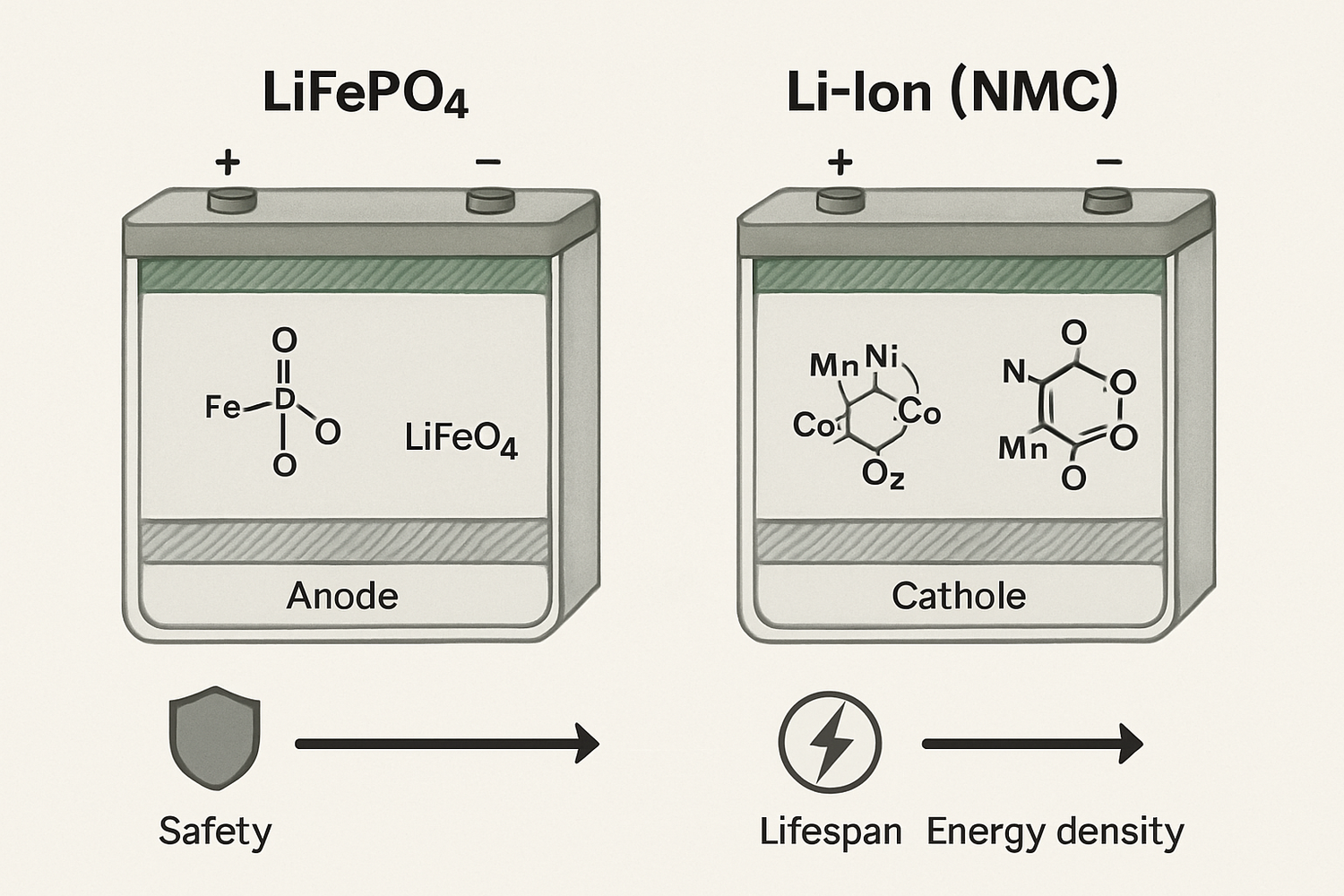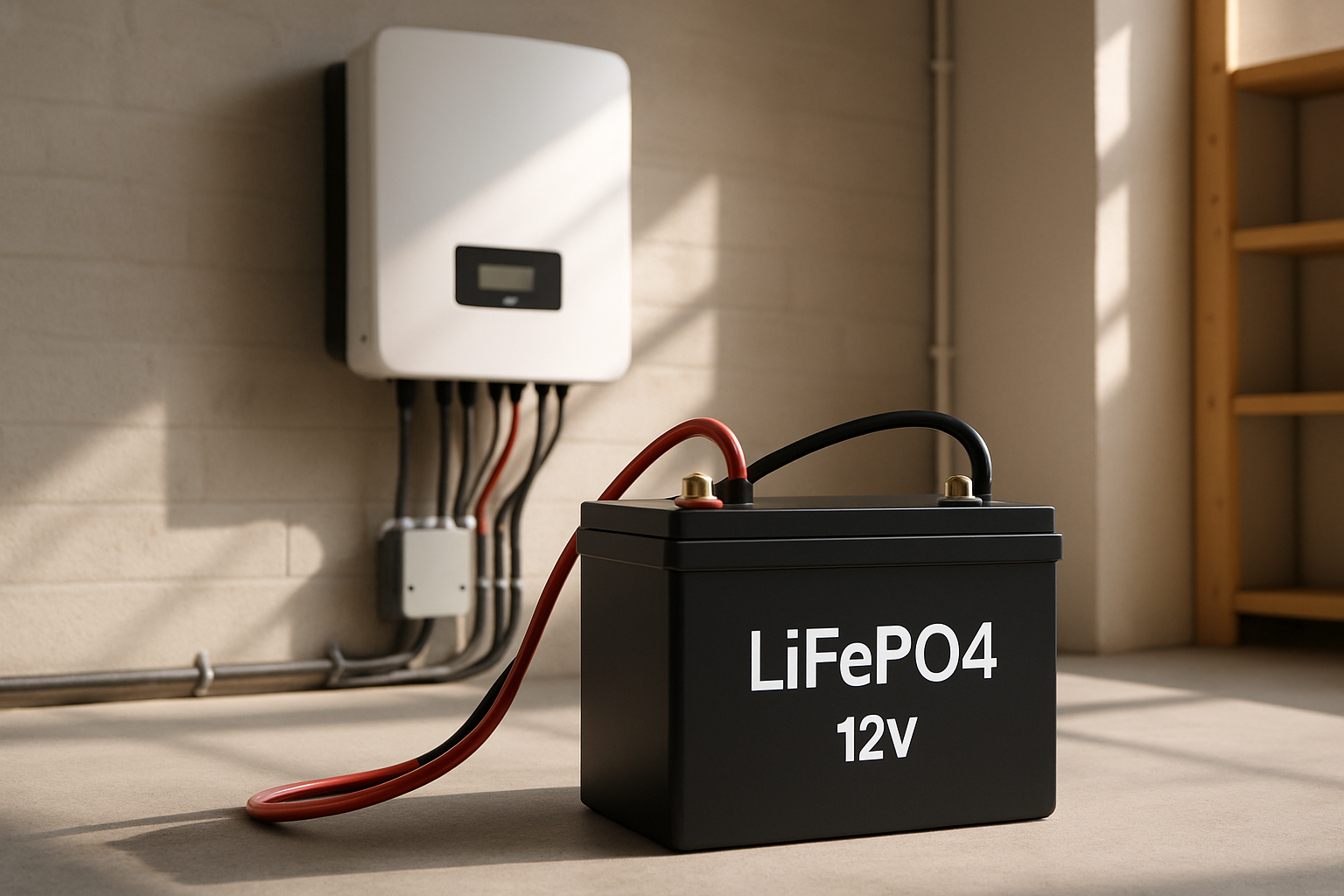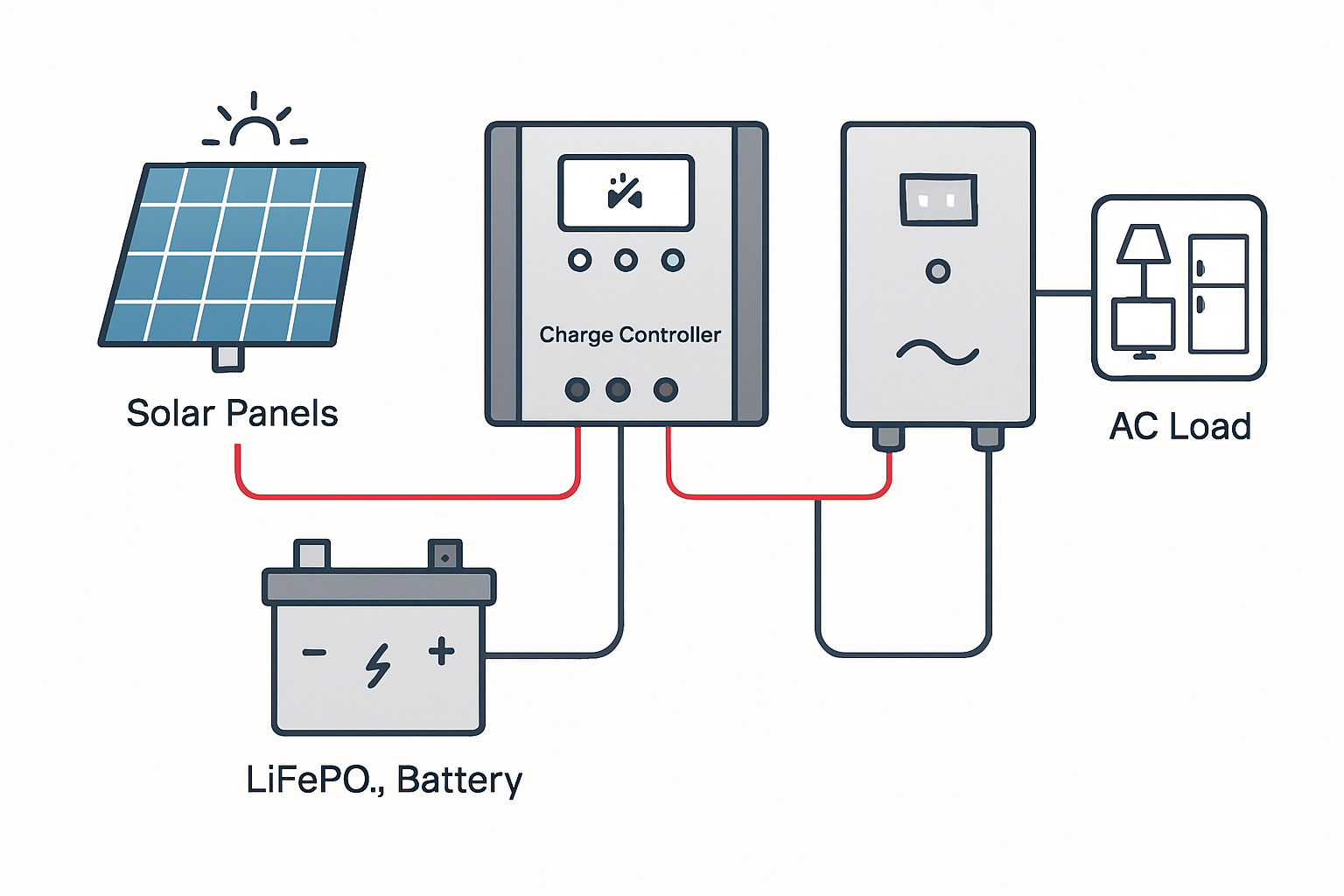In any solar power system, the battery is the core component that enables energy independence. It stores the sun's energy for use at night or during cloudy days. When selecting a solar panel battery, the choice often comes down to two leading lithium technologies: Lithium Iron Phosphate (LiFePO4) and other Lithium-Ion (Li-Ion) chemistries. Understanding the distinctions between them is key to building a reliable and efficient solar energy storage system.
This overview offers a clear comparison of LiFePO4 and other Li-Ion batteries, examining the critical factors that influence performance, safety, and long-term value. You will gain the insights needed to select the right technology for your specific solar panel battery integration needs.
Understanding the Core Technologies
While both fall under the 'lithium-ion' umbrella, their internal chemistry creates significant differences in how they perform. The material used for the cathode is the primary differentiator.
What are LiFePO4 Batteries?
LiFePO4 batteries, a specific subtype of lithium-ion batteries, use Lithium Iron Phosphate (LiFePO4) as the cathode material. This chemistry is recognized for its exceptional stability and safety. The strong covalent bonds within the iron phosphate structure make the battery less prone to overheating and thermal runaway, a critical safety feature for home energy storage. As a result, LiFePO4 batteries are a preferred choice for stationary applications where safety and a long service life are the highest priorities.
What are Other Li-Ion Batteries?
The broader 'Li-Ion' category typically refers to batteries with cathodes made from materials like Nickel Manganese Cobalt (NMC) or Nickel Cobalt Aluminum (NCA). These chemistries are known for their high energy density, meaning they can store more energy in a smaller and lighter package. This characteristic makes them well-suited for portable electronics and electric vehicles, where space and weight are primary design constraints. For residential use, their high density is advantageous for compact, wall-mounted battery units.
Head-to-Head Comparison: Key Performance Metrics
Choosing the right lithium ion solar battery requires a careful look at several performance indicators. The ideal choice depends on your specific priorities, whether they are safety, longevity, or physical size.
| Feature | LiFePO4 Battery | Li-Ion Battery (NMC/NCA) |
|---|---|---|
| Safety | Excellent thermal and chemical stability | Higher risk of thermal runaway if not managed properly |
| Cycle Life | 2,000 - 10,000 cycles | 1,000 - 2,000 cycles |
| Energy Density | Lower (90-120 Wh/kg) | Higher (150-220 Wh/kg) |
| Environmental Impact | Cobalt-free, uses abundant materials like iron and phosphate | Contains cobalt and nickel, which have sourcing and environmental concerns |
| Upfront Cost | Can be higher, but prices are falling | Often lower initially |
Safety and Thermal Stability
LiFePO4 batteries are the clear leader in safety. Their stable chemistry makes them highly resistant to thermal runaway, even under harsh conditions like overcharging or physical damage. This inherent safety is a significant advantage for any home battery storage system. According to a report from the Renewable Power Generation Costs in 2024, LFP chemistry is often preferred for its thermal stability. In contrast, while NMC batteries have advanced safety systems, their higher energy density makes them more susceptible to overheating if their protective circuits fail.
Lifespan and Cycle Count
A battery's lifespan is measured in charge-discharge cycles. LiFePO4 batteries excel here, typically offering between 2,000 and 10,000 cycles before significant capacity degradation. NMC batteries generally provide 1,000 to 2,000 cycles. This extended lifespan makes a 12v 100ah LiFePO4 lithium battery a more durable investment for a system that cycles daily. A deep dive into solar storage performance metrics reveals that a higher cycle life directly translates to a lower long-term cost of ownership. For a comprehensive look at how these metrics impact your system, the ultimate reference on solar storage performance provides detailed data.
Energy Density and Physical Footprint
Energy density is where NMC batteries have an edge. They can store more energy per kilogram, which allows for smaller and lighter battery packs. This is a key advantage in applications with limited space. A LiFePO4 battery of the same capacity, such as a 100ah lithium ion battery, will be larger and heavier. For stationary energy storage solutions where space is less of a concern, this trade-off is often acceptable for the gains in safety and longevity.
Cost and Environmental Considerations
The financial and ecological impact of a battery are important factors. The initial price tells only part of the story; long-term value and material sourcing provide a more complete picture.
Upfront Cost vs. Long-Term Value
Historically, LiFePO4 batteries had a higher upfront cost. However, prices have become much more competitive. While the initial investment for a LiFePO4 system might be slightly more, its significantly longer lifespan often results in a lower total cost of ownership. As noted in research from the International Renewable Energy Agency (IRENA), overall battery storage costs have fallen dramatically, making these technologies more accessible. The Renewable Power Generation Costs in 2024 report highlights a 93% cost reduction for utility-scale systems between 2010 and 2024.
Material Sourcing and Environmental Impact
LiFePO4 batteries offer a distinct environmental advantage because they do not contain cobalt or nickel. Cobalt mining is associated with significant environmental and ethical issues. LiFePO4 chemistry relies on iron and phosphate, which are more abundant and less toxic materials. A study mentioned by the International Energy Agency (IEA) in its The Role of Critical Minerals in Clean Energy Transitions report points to LFP's non-reliance on cobalt as a key benefit for stationary applications.
Practical Applications in Solar Systems
The theoretical differences between these batteries translate into practical advantages for different types of solar installations.
Residential Solar Storage
For most home battery storage systems, safety and longevity are paramount. This makes LiFePO4 the preferred choice for homeowners seeking a reliable, long-lasting solution for daily cycling and backup power. Its stability provides peace of mind, which is a crucial factor for a device installed in a home. NMC batteries may be selected for their compact size in specific situations, such as apartments or installations where space is extremely limited.
Off-Grid and Large-Scale Systems
In off-grid solar solutions for farms, cabins, or remote homes, durability is essential. LiFePO4 batteries, including common sizes like the 12 volt 100ah lithium battery, are built to withstand the deep, frequent cycling that is typical of an off-grid lifestyle. Their robustness also makes them suitable for larger, integrated energy storage systems (ESS). As highlighted by the U.S. Department of Energy, the pairing of solar with storage is becoming increasingly important for grid stability. A report on improving interconnection for solar and battery storage emphasizes that as solar capacity expands, storage is vital for managing energy flow.
Wrapping It Up
The decision between LiFePO4 and other Li-Ion batteries for your solar system is a choice between priorities. If your primary goals are maximum safety, a very long operational life, and a minimal environmental footprint, the LiFePO4 battery is the superior option. It is an ideal deep cycle lithium battery for achieving long-term energy independence.
If your project is constrained by space and weight, and you need the highest possible energy storage in the smallest package, an NMC-based lithium battery pack could be a suitable alternative. By evaluating your specific needs against these key characteristics, you can confidently select the battery that will best power your solar journey for years to come.
Disclaimer: The information provided is for educational purposes only and does not constitute financial or investment advice. Consult with a qualified professional before making any decisions about your energy system.
Frequently Asked Questions
Which battery is safer, LiFePO4 or Li-Ion?
LiFePO4 is considered safer. Its chemical structure is inherently more stable and far less susceptible to thermal runaway, a condition where a battery overheats uncontrollably.
Will a LiFePO4 battery last longer than a standard Li-Ion battery?
Yes, LiFePO4 batteries offer a substantially longer cycle life. They can typically endure 2 to 5 times more charge and discharge cycles than most NMC-based Li-Ion batteries, making them more durable for long-term use.
Why would someone choose a Li-Ion (NMC) battery over LiFePO4 for solar?
The main reason is higher energy density. If space and weight are the most critical limitations for an installation, an NMC battery can store more energy in a more compact and lighter form factor.
Can I use a 12v 100ah lithium ion battery for my off-grid setup?
Yes, a 12v 100ah lithium battery is a very popular size for off-grid solar applications. For these systems, a lithium iron phosphate (LiFePO4) version is strongly recommended due to its superior safety, durability, and ability to handle the deep discharge cycles common in off-grid living.





Leave a comment
All comments are moderated before being published.
This site is protected by hCaptcha and the hCaptcha Privacy Policy and Terms of Service apply.